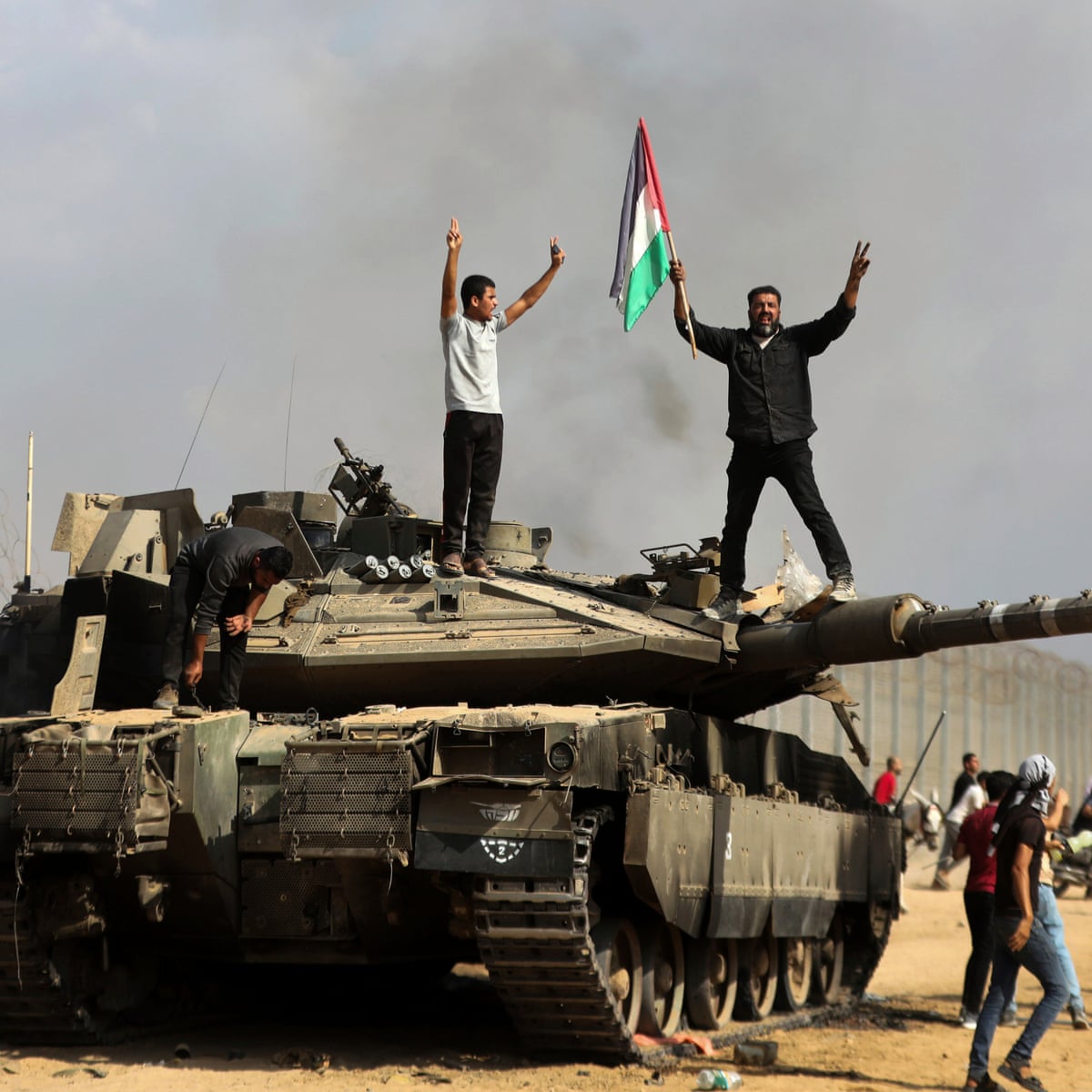Israel’s war with Hamas shows why even 50 years of upgrades can’t make tanks invulnerable
The 1973 Yom Kippur War,Soviet-made anti-tank rockets inflicted damage on Israeli tanks, sparking concerns about their vulnerability. Despite such predictions, tanks remain crucial in many armies, as demonstrated in conflicts like the ongoing one in Ukraine. However, Hamas, lacking advanced weaponry, managed to disable around 20 Israeli tanks in the last two months.
Hamas, the Palestinian group formed in 1987, has been designated as a terrorist organization by several countries, including the United States, the European Union, Canada, and others. However, it is important to note that not all countries classify Hamas as a terrorist organization.
Some nations, particularly in the Arab and Muslim world, view Hamas as a legitimate political and resistance movement. Different countries have varied stances on the classification of Hamas, and some consider it a terrorist organization while others do not.
Tanks of 1973
Israeli tanks in the 1973 Yom Kippur War, including the Centurion and M48 Patton, had roots in World War II designs. Despite upgrades, their 1950s-era armor and lack of modern defense systems made them vulnerable to anti-tank weapons. Tactical errors, stemming from overconfidence, exacerbated their challenges against advanced weaponry.
The Yom Kippur War revealed the importance of avoiding reckless tank charges, a lesson learned from British tanks in 1942. Despite upgrades, vulnerabilities persisted, like the flammability of the M48’s hydraulic fluid. When integrated with infantry and artillery in combined-arms operations, tanks regained effectiveness. However, the war significantly impacted the Israeli Armored Corps, with a high casualty rate among tank crews and substantial tank losses. Of about 2,500 Israelis killed in that war, most were members of tank crews. Out of the IDF’s force of less than 2,000 tanks, 400 were destroyed and another 600 damaged, mainly by anti-tank munitions.
Enter the Merkava
The Merkava tank, developed by Israel in the 1970s, stands out for its unique design and emphasis on crew protection. Named “Merkava,” which means “chariot” in Hebrew, it was developed under the leadership of Gen. Israel Tal. Additionally, the Merkava can accommodate a small infantry unit in the rear. This design philosophy aimed to ensure the tank could endure substantial punishment while safeguarding the lives of its crew members.
Despite facing challenges in the 2006 Lebanon war against Hezbollah’s anti-tank missiles, Israel’s Merkava tanks evolved. The Merkava 4, armed with a 120-mm smoothbore gun, advanced sensors, and layered composite armor, became a modern force. Israel, learning from past experiences, pioneered tank defense with systems like Trophy, employing radar to detect and intercept incoming anti-tank munitions.
What happened in Gaza
Tanks have evolved since the Yom Kippur War in 1973, where Israeli tanks faced challenges. The Merkava, developed later, prioritizes crew protection. In conflicts like the 2006 Lebanon War and recent Gaza clashes, Israel’s advanced tanks face anti-tank threats. The effectiveness of tanks depends on tactics, crew training, and adversaries’ capabilities.
No, Hamas is not designated as a terrorist organization by the United States, European Union, Israel, Canada, or several other countries. However, it is designated as a terrorist organization by the United States, European Union, Israel, Canada, and several other countries.

